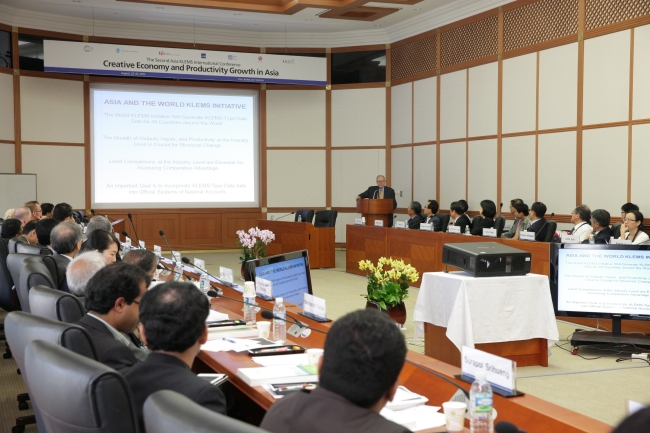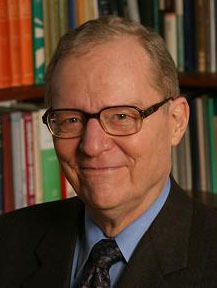Revamping corporate governance is key to creative economy
Korea needs to ban conglomerates’ pyramid holding structures, Harvard economist says
By Korea HeraldPublished : Aug. 26, 2013 - 20:33
The Korea Herald is publishing a series of articles scrutinizing key aspects and sectors related to the creative economy the Park Geun-hye government is promoting as a national agenda. The series will feature interviews with top government officials and IT gurus, and strategies to embody the policy. The special articles were made in cooperation with the Ministry of Science, ICT and Future Planning and the Ministry of Trade, Industry and Energy. This is the third part of the creative economy series. ― Ed.
Korea needs to overhaul corporate governance of conglomerates to achieve the government’s goal of creating a Silicon Valley-like business environment that produces venture startups in information communication technology and creative industries, a renowned Harvard University economist and ITC expert stressed in Seoul.
Dale W. Jorgenson told The Korea Herald last week that the biggest obstacle to the economy reaching its potential was the pyramid holding structures of Korean conglomerates that allowed a small group of people at the top of a stack of holding companies to control vast assets with minimum investment.
“There is a very serious defect with the Korean mode of business organization that is very well known to people in Korea, which is incredible concentration of power and influence in a very, very small number of hands. Now, why does this occur? It occurs for one very simple reason and that is Korea has never had, as some other countries have, a law against pyramided holdings,” said Jorgenson, who was in Seoul to attend the Second Asia KLEMS International Conference at the Bank of Korea from Aug. 22-23. The theme of the event was the creative economy and productivity growth in Asia.
Korea needs to overhaul corporate governance of conglomerates to achieve the government’s goal of creating a Silicon Valley-like business environment that produces venture startups in information communication technology and creative industries, a renowned Harvard University economist and ITC expert stressed in Seoul.
Dale W. Jorgenson told The Korea Herald last week that the biggest obstacle to the economy reaching its potential was the pyramid holding structures of Korean conglomerates that allowed a small group of people at the top of a stack of holding companies to control vast assets with minimum investment.
“There is a very serious defect with the Korean mode of business organization that is very well known to people in Korea, which is incredible concentration of power and influence in a very, very small number of hands. Now, why does this occur? It occurs for one very simple reason and that is Korea has never had, as some other countries have, a law against pyramided holdings,” said Jorgenson, who was in Seoul to attend the Second Asia KLEMS International Conference at the Bank of Korea from Aug. 22-23. The theme of the event was the creative economy and productivity growth in Asia.


The former head of Harvard’s economics department said banning this type of corporate structure would be the single greatest action the government could take to encourage entrepreneurship and bring about President Park Geun-hye’s vision of a “creative economy.”
“The only viable legal formula (to end the domination of the chaebol) would be to eliminate pyramid holdings, in other words, eliminate this cascade of ownership that enables people at the peak of the pyramid, the Samsungs and the LGs and so on, to control vast parts of the economy with a very modest amount of equity relative to the total assets that are under control. So what does that mean? That means all the way down on this chain they are actually dictating (to) the people who are actually making the decisions.”
Jorgenson said that this sort of business structure was antithetical to the operation of Silicon Valley, where firms and their suppliers stood on more equal terms. Decentralized decision-making, he added, rather than hierarchal operations, was what allowed the U.S. to become the world leader in ITC.
“Apple doesn’t control four tiers or five tiers or something like that using a pyramid (system). That is not the way they operate. And all of these relationships, which are very elaborate, involving supply chains and the business relationships, are symmetrical,” he said. “They are not someone giving Samsung orders to deliver something. They have to negotiate a deal with Samsung to (say), ‘Will you supply the next iPhone components of the following sort? If not, we will be forced to go somewhere else.’”
A key aspect of the president’s creative economy vision is the convergence of technology and culture. While critics have called the concept or Park’s prescriptions overly abstract, Jorgenson said such criticism was misplaced.
“I think that is unfair. I have heard that criticism and I actually had that impression myself. I guess I have come around to the view that if you think of all the different components of the so-called creative industries, the performing arts, the media that are associated with that and the different modes of delivery and so on, that is a huge part of the application of IT: essentially making it possible to transmit the products of the creative industries through media-like video on the Internet, and that sort of thing is a huge market opportunity that has transformed the way in which the industry operates and made it much more important from the economic point of view.”
Jorgenson’s own experience working on an upcoming book of his provided such an example of the convergence of creative content and technology.
“Since this is a book that we hope will appeal to our fellow economists and students and so on, there is going to be a library version. This library version in basically going to be an e-book but is bound up with software that makes it possible to confine the delivery to the customers of the library,” he said.
“So in the case of Harvard, for example, there are 20,000 people that can get to the library electronically. And so a very important market for this publisher is to sell this to the 2,000 university libraries, as many of them as possible.”
To fund the creative economy, the government has pledged to provide more than 3 trillion won ($3.3 billion) to help new start-ups get off the ground. Separately, local ITC firms recently lobbied Science, ICT and Future Planning Minister Choi Mun-kee on the need for support to survive competition against larger foreign firms. Choi said the firms should improve their price competitiveness and products before they benefit from government subsidies. Jorgenson, however, expressed skepticism about the government funding start-ups’ activities or stepping in to make sure they did not fail.
“I hate to sound like a Darwinian but I mean there are 10, 15, 20 good ideas that are out there that are not good enough in the marketplace that have to be tried out at the level of someone going out and starting a business to see what kind of penetration they can get,” he said. “And you’ve got to be able to liquidate that, you’ve go to be able to call a halt to that, and that is what the venture capitalists do. They are not only the gatekeepers for entry but they are the undertakers if you like, they deliver the bad news.”
But he added that the government did have a part to play in expanding free trade. He said the trade liberalization that allowed ICT manufacturing from the U.S. and elsewhere to move to Asia was instrumental in ITC development.
“Nevertheless, the government plays a very important role in free trade. The critical government intervention in IT was through the World Trade Organization. The 70-country WTO agreement on information technology is the single institutional framework that made it possible to develop the Asian supply chains that proliferated over the last decade or two.”
Dale W. Jorgenson
•Teaches at the Samuel W. Morris University at Harvard University
•Was chairman of the Department of Economics from 1994 to 1997
•Elected as a member of the American Philosophical Society, the National Academy of Sciences, the American Academy of Arts and Sciences and the American Association for the Advancement of Science
•Served as president of the American Economic Association in 2000
•Authored more than 246 articles including his most recent book “Information Technology and the American Growth Resurgence”
•Received his Ph.D. in economics from Harvard in 1959 and his BA in economics from Reed College in Portland in 1955
By John Power (john.power@heraldcorp.com)
-
Articles by Korea Herald


![[Exclusive] Korean military set to ban iPhones over 'security' concerns](http://res.heraldm.com/phpwas/restmb_idxmake.php?idx=644&simg=/content/image/2024/04/23/20240423050599_0.jpg&u=20240423183955)




![[Pressure points] Leggings in public: Fashion statement or social faux pas?](http://res.heraldm.com/phpwas/restmb_idxmake.php?idx=644&simg=/content/image/2024/04/23/20240423050669_0.jpg&u=)

![[Herald Interview] 'Amid aging population, Korea to invite more young professionals from overseas'](http://res.heraldm.com/phpwas/restmb_idxmake.php?idx=644&simg=/content/image/2024/04/24/20240424050844_0.jpg&u=20240424200058)









